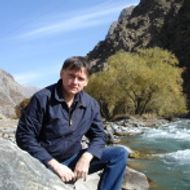- A
- A
- A
- АБB
- АБB
- АБB
- А
- А
- А
- А
- А
- Национальный исследовательский университет «Высшая школа экономики»
- Научные подразделения
- Институт демографии имени А.Г. Вишневского
- Кафедра демографии
- Учебные курсы
- Введение в статистику и математику 2021 и 2022 учебного года
-
Кафедра
Адрес: г. Москва, Большой Трехсвятительский пер., д. 3, к. 403.
Проезд: м. Курская, Китай-город Схема проезда
Телефон: (495)772-95-90 *11810, 11824
E-mail: nzhuleva@hse.ru; mvinnik@hse.ru
|
Кафедра демографии образована в 2007 году как межфакультетская кафедра в составе Института демографии НИУ ВШЭ. Сегодня преподаватели кафедры читают демографические курсы для студентов-бакалавров по направлению социология, экономика, государственное и муниципальное управление, прикладная политология, мировая экономика и мировая политика. Параллельно для подготовки специалистов-демографов в 2009 году открыта магистерская программа "Демография", а в 2015 году состоялся первый набор на англоязычную магистарскую программу "Население и развитие". Кафедра развивает связи с образовательными учреждениями зарубежных стран. Ее преподаватели принимают активное участие в подготовке и переквалификации специалистов в области народонаселения из стран СНГ. |
 Новые подходы к внешнеэкономической стратегии России: аналитический доклад
Новые подходы к внешнеэкономической стратегии России: аналитический доклад
Бирюкова О. В., Глазатова М. К., Ильина И. Е. и др.
М.: ИД "Международные отношения", 2024.
Population and Economics. 2024. Vol. 8. No. 1. P. 97-114.
Селезнева Е. В., Потапчик Е. Г., Сажина С. В. и др.
В кн.: Человеческий потенциал: современные трактовки и результаты исследований. М.: Всероссийский центр изучения общественного мнения, 2023. Гл. 1.7. С. 113-142.
Селезнева Е. В., Шарепина Е. А., Карева Д. Е.
Научный дайджест НЦМУ. 0000. НЦМУ "Центр междисциплинарных исследований человеческого потенциала, 2023. № 12 (29).
Introduction to Statistics and Calculus
- Кто читает:
- Кафедра демографии (Институт демографии имени А.Г. Вишневского)
- Статус:
- Курс адаптационный
- Когда читается:
- 1-й курс, 1 модуль
Преподаватель
Козлов Владимир Александрович
Course Syllabus
Abstract
- О ВЫШКЕ
- Цифры и факты
- Руководство и структура
- Преподаватели и сотрудники
- Корпуса и общежития
- Закупки
- Обращения граждан в НИУ ВШЭ
- Фонд целевого капитала
- Противодействие коррупции
- Сведения о доходах, расходах, об имуществе и обязательствах имущественного характера
- Сведения об образовательной организации
- Людям с ограниченными возможностями здоровья
- Единая платежная страница
- Работа в Вышке
- ОБРАЗОВАНИЕ
- Лицей
- Довузовская подготовка
- Олимпиады
- Прием в бакалавриат
- Вышка+
- Прием в магистратуру
- Аспирантура
- Дополнительное образование
- Центр развития карьеры
- Бизнес-инкубатор ВШЭ
-
http://www.minobrnauki.gov.ru/
Министерство науки и высшего образования РФ
-
https://edu.gov.ru/
Министерство просвещения РФ
-
http://www.edu.ru
Федеральный портал «Российское образование»
-
https://elearning.hse.ru/mooc
Массовые открытые онлайн-курсы
- © НИУ ВШЭ 1993–2024 Адреса и контакты Условия использования материалов Политика конфиденциальности Карта сайта
- Редактору
